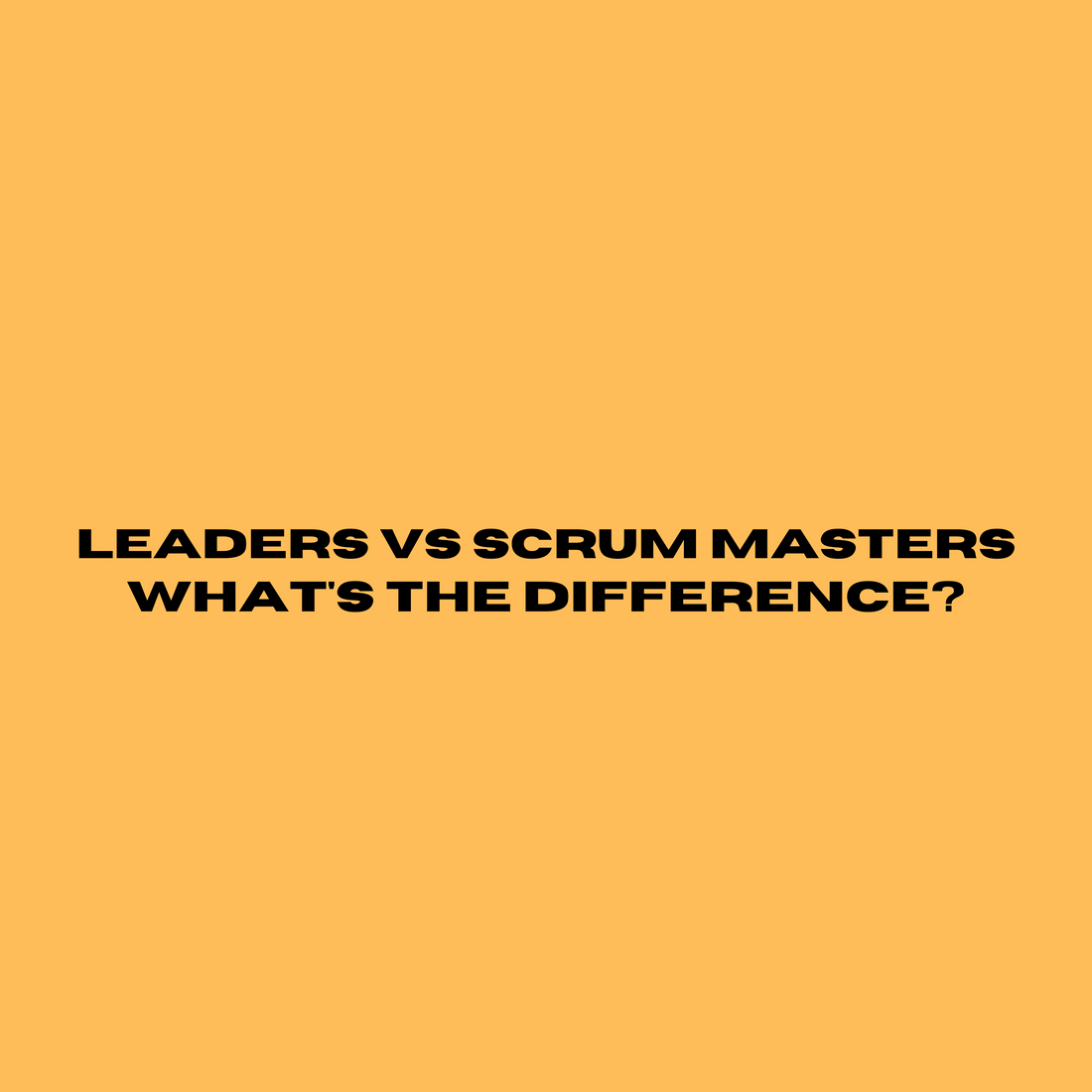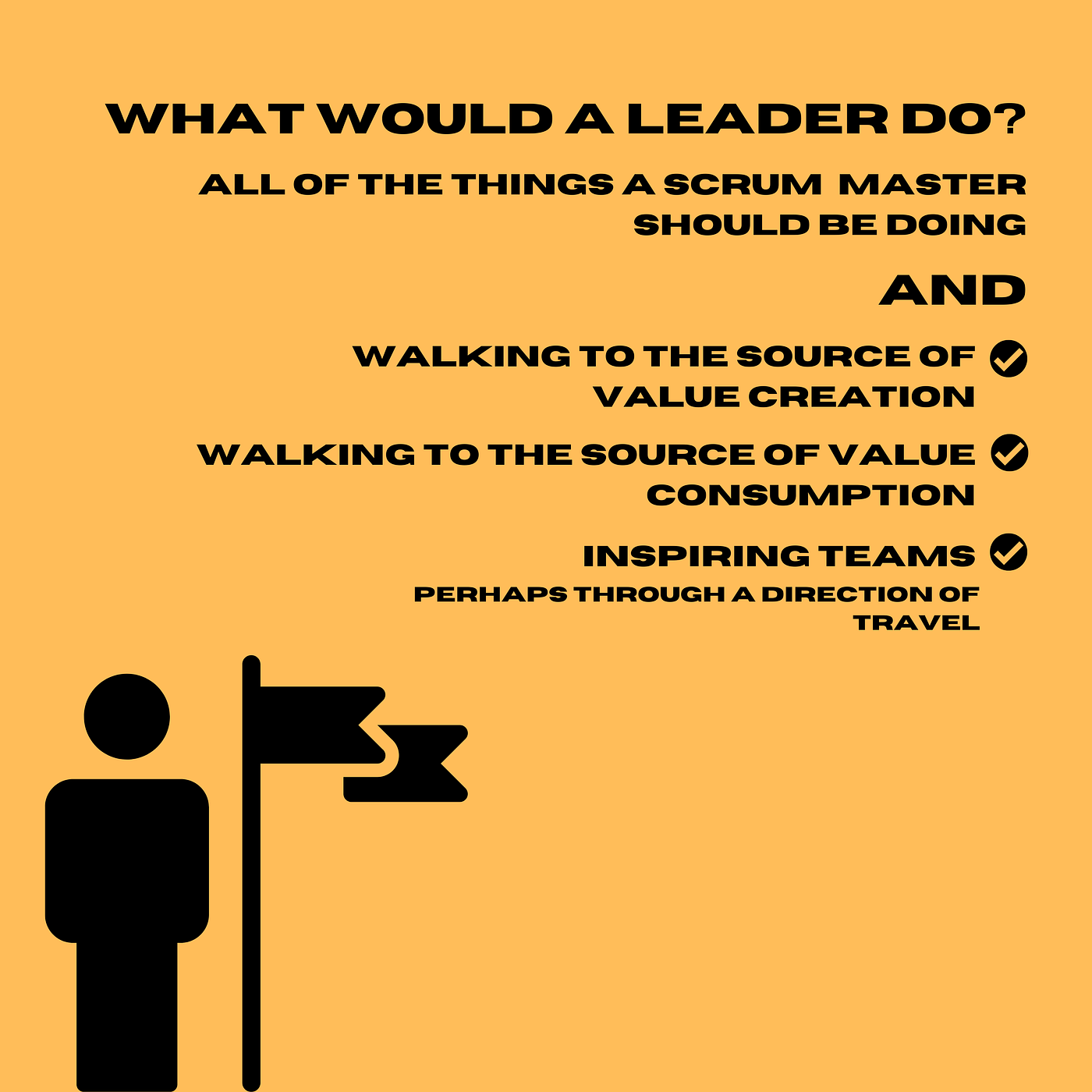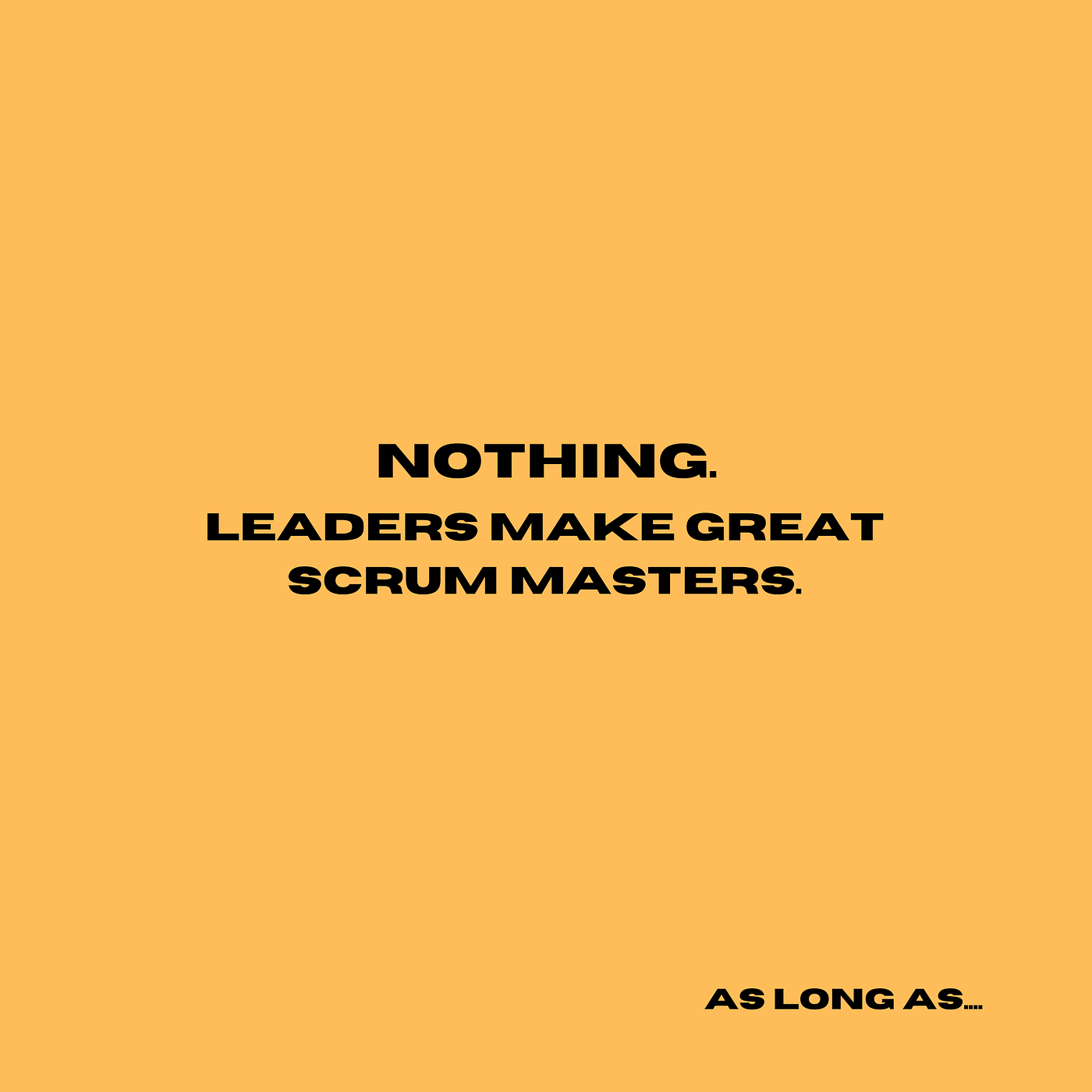
Leader vs Scrum Master, what is the difference between a Scrum Master and an Agile Coach?
Share

What is the difference between a scrum master and an agile leader? Before I answer that question, what is the difference between a scrum master and an agile coach? $200 a day.
A scrum master should:
- be working at all levels of the organization and
- working with other teams of teams,
- helping people to understand how scrum works,
- how agile works, and
- also working as a change agent across the organization to try and help expand carefully the footprint of agility,
but let’s get back to the main question. So what’s the difference between a scrum master and a leader?
If you start with the scrum master, what should a scrum master be doing?

- Scrum master should be observing through whatever senses they have, for example, seeing sensing, smelling, seeing the body language, and observing what’s going on and that means a lack of judgment. So I observe that when you behave like this, something happened and so on.
- Maybe helping people, but not inflicting help. Helping when help is requested, coaching people professionally, asking Socratic open questions, when there’s permission from the coachee to do that, giving advice, when advice is requested.
- Teaching when people are open to hearing other options for how they can do their work.
- Acting as a change agent for the rest of the organization, removing impediments that are beyond the control and influence of the teams or teams of teams
- Working with leadership to help cultivate the environment where agility can grow.
These are all things that a scrum master should be doing. The scrum master can also help to make sure that scrum has been done well. In doing so, if they observe negative chaos commencing, or for example, if they notice maybe unconstructive conflict, maybe unhealthy conflict, maybe a scrum master needs to step in.
We need to help to make sure that the teams are self-managing, but if we’re noticing some negative chaos kicking in, we might need to intervene to try and re-establish some kind of healthy conflict or make sure we’re getting back into positive chaos or complexity or complicatedness or even clear work, but getting out of that negative chaos, giving the teams a nudge to get out of that.
These are all interesting things for our Scrum masters to do.
What would a leader do?

What would a leader do? Very similar, I would say, there are some additions, I would say one of them is walking to the source of value creation. Where’s the work being created. If it’s software development, you might even be looking at the source code with the team doing mob programming.
If you do non-software you’re visiting where the product is being produced, where the service is being delivered and you’re seeing what’s going on. And it’s less about a Royal tour where people know you’re coming, it’s prearranged and they stick up these posters on the wall because you’re coming because you’re so important.
You are important and they think you’re important. It’s not about that. It’s about unexpected visits so it’s much more informal. So people are much more likely to be open to you about what’s frustrating them. What’s slowing them down. How can you help them? And it also helps by the way, if you’re technical, not so technical that you understand every single thing that they’re doing, but technical to the extent that you understand what’s going on.
So you understand the technical risks that that were sitting on top of, particularly if people’s health or lives are at risk or the organizational health is at risk. So understanding what’s going on walking the Gemba they used to call it in Japan. You can walk the Gemba of value creation, but you can also walk the Gemba of value consumption where value is being consumed, visiting customers and end user, not just having one-off visits to customers and thinking that every customer represents the one or two customers that you visited getting into this habit of meeting customers in the various regions that you operate, meeting them face to face and meeting them online, understanding their perspective, understanding what jobs they’re trying to perform
You also need to be inspiring teams. Not everybody is a visionary, but you need to be in a situation where you can inspire teams through a direction of travel. Maybe you’ll co-create that direction of travel with the teams or teams of teams so that everybody feels inspired and inspiring and really helping to light the place of helping people to get better.
Your job is to help to cultivate the environment where agility can grow. For example, we might have a horizontal growth path, you can grow horizontally. You don’t have to get promoted vertically to get more pay, to get more recognized. You can grow horizontally where we have more frequent funding cycles, so we can be more adaptive of what, and where the funding should go.
We thought at the start of the year that all the value would be created in this area, but we’ve learned actually the value isn’t there it’s actually somewhere else. And we need to pivot in a different direction we need a funding cycle that is more regular, that allows us to adapt to that. We need to declutter workflows and processes that are impeding the agility of our teams.
We need to help teams to demonstrate how they can be compliant without necessarily doing it in a waterfall way. There are more agile ways of demonstrating compliance. What’s more important is that we understand what we’re trying to control, what risks we’re trying to manage and find some alternative ways how we can demonstrate that were on top of those risks.
So these would be the key differences and it kind of begs the question then:
What’s stopping a scrum master from being a leader and leader being a scrum master?


Nothing stopping it. In fact, I think leaders make great scrum masters.

As long as they act as leaders and not act as controlling managers. There are some good managers, of course not all managers are controlling, so you could do that, but you just need to be careful because if, for example, Vanessa was my manager. Maybe she shouldn’t also be my scrum master because that kind of impedes the self-management of the team.

Maybe she should be a scrum master with a different team, cause if she’s now my line manager, if she looks after my pay reviews and all that type of stuff, maybe it’s better. If she’s a scrum master on a different team but we should definitely use your skills because you know what? Managers, leaders, they often have more power to fix problems, to remove impediments than scrum masters.
That would be my summary of the difference between a scrum master and an agile leader. Not much. There’s a lot of overlap. Thank you.
https://linktr.ee/johncolemanxagility - social and podcast links
https://linkpop.com/orderlydisruption - order training from right here